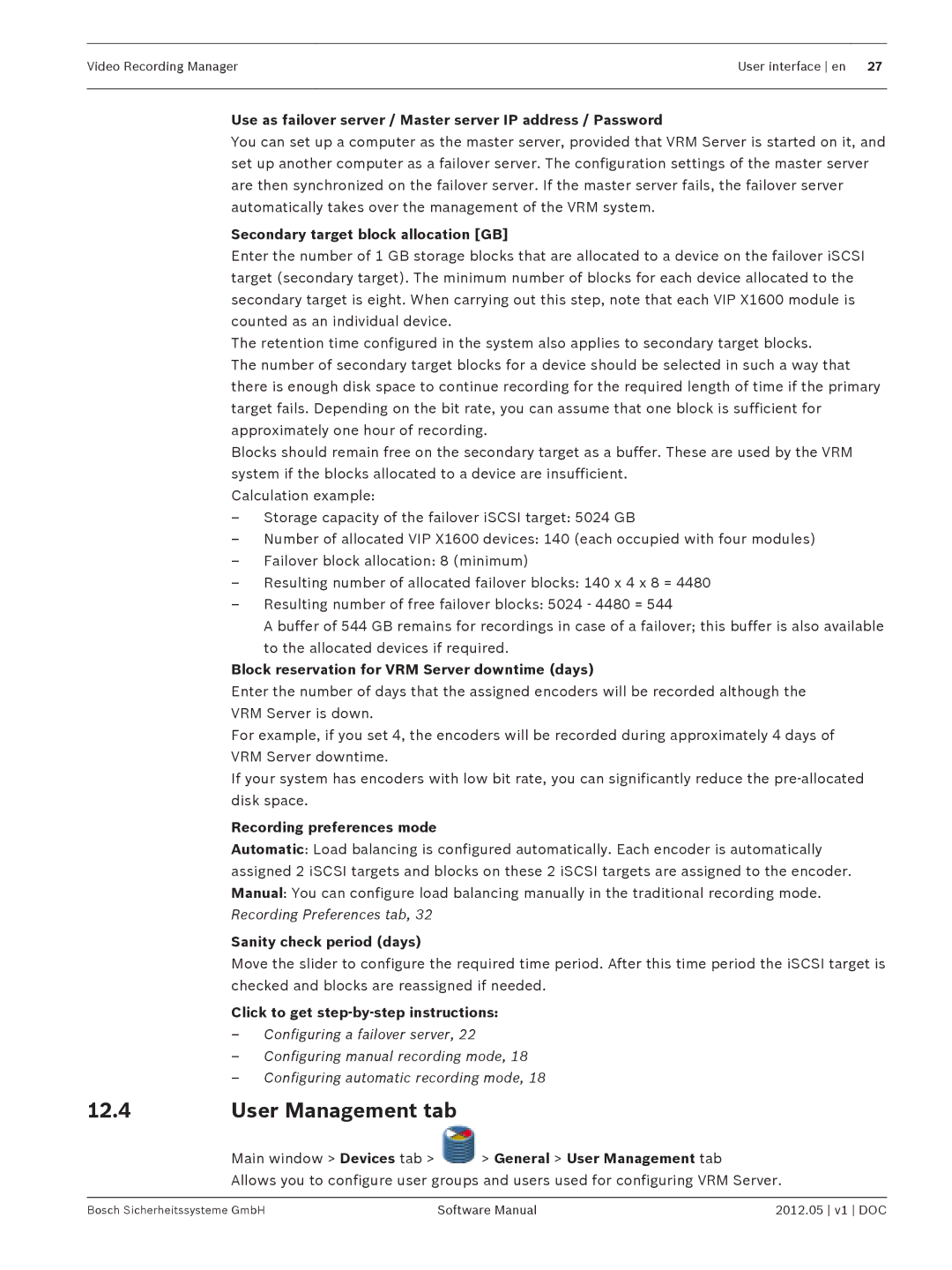
Video Recording Manager | User interface en 27 |
|
|
Use as failover server / Master server IP address / Password
You can set up a computer as the master server, provided that VRM Server is started on it, and set up another computer as a failover server. The configuration settings of the master server are then synchronized on the failover server. If the master server fails, the failover server automatically takes over the management of the VRM system.
Secondary target block allocation [GB]
Enter the number of 1 GB storage blocks that are allocated to a device on the failover iSCSI target (secondary target). The minimum number of blocks for each device allocated to the secondary target is eight. When carrying out this step, note that each VIP X1600 module is counted as an individual device.
The retention time configured in the system also applies to secondary target blocks.
The number of secondary target blocks for a device should be selected in such a way that there is enough disk space to continue recording for the required length of time if the primary target fails. Depending on the bit rate, you can assume that one block is sufficient for approximately one hour of recording.
Blocks should remain free on the secondary target as a buffer. These are used by the VRM system if the blocks allocated to a device are insufficient.
Calculation example:
–Storage capacity of the failover iSCSI target: 5024 GB
–Number of allocated VIP X1600 devices: 140 (each occupied with four modules)
–Failover block allocation: 8 (minimum)
–Resulting number of allocated failover blocks: 140 x 4 x 8 = 4480
–Resulting number of free failover blocks: 5024 - 4480 = 544
A buffer of 544 GB remains for recordings in case of a failover; this buffer is also available to the allocated devices if required.
Block reservation for VRM Server downtime (days)
Enter the number of days that the assigned encoders will be recorded although the VRM Server is down.
For example, if you set 4, the encoders will be recorded during approximately 4 days of VRM Server downtime.
If your system has encoders with low bit rate, you can significantly reduce the
Recording preferences mode
Automatic: Load balancing is configured automatically. Each encoder is automatically assigned 2 iSCSI targets and blocks on these 2 iSCSI targets are assigned to the encoder. Manual: You can configure load balancing manually in the traditional recording mode. Recording Preferences tab, 32
Sanity check period (days)
Move the slider to configure the required time period. After this time period the iSCSI target is checked and blocks are reassigned if needed.
Click to get
–Configuring a failover server, 22
–Configuring manual recording mode, 18
–Configuring automatic recording mode, 18
12.4 | User Management tab |
|
| Main window > Devices tab > | > General > User Management tab |
Allows you to configure user groups and users used for configuring VRM Server.
Bosch Sicherheitssysteme GmbH | Software Manual | 2012.05 v1 DOC |
